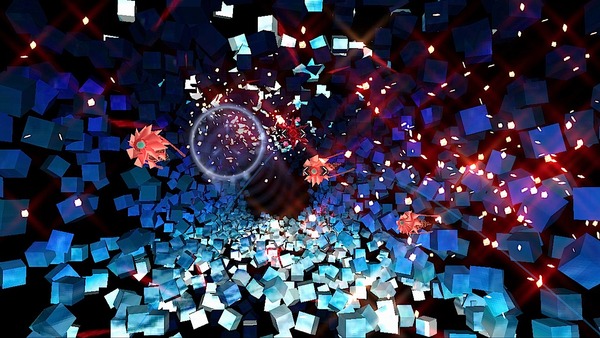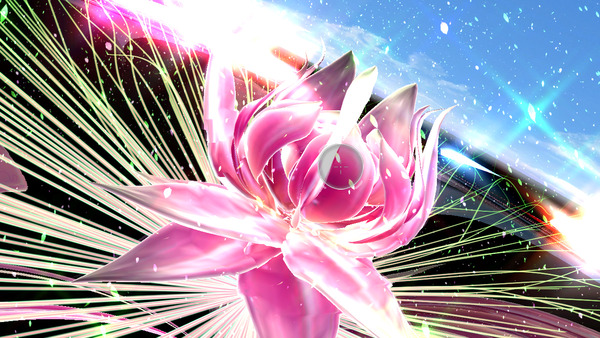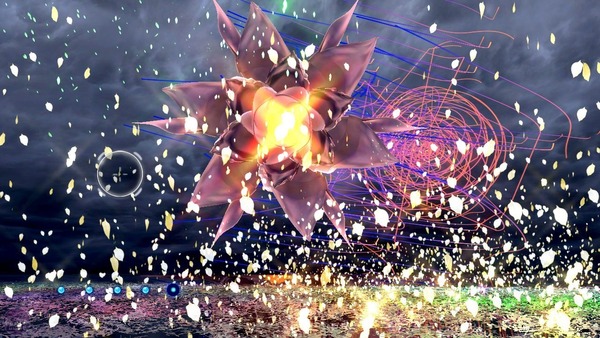Child of Eden is one of the most fully realized instances of interactive art the gaming world has yet seen. Labeling it as simply a “video game” seems to do it an injustice somehow. It clearly strives to be something more; to convey a message, to impart a certain feeling upon the player unlike any lowly game they’ve ever played before.
However successful it may be in these attempts, Child of Eden’s artistic aspirations are also worthy of note for more pragmatic reasons. When viewed as a $50 piece of art that uses a controller, an HDTV, and a good sound system as its mediums, the experience is untouchable. There’s simply nothing else like it available today. Playing it transports you to another world, another mindset. It’s a magical experience that you can relive over and over again, just like getting lost in the depths of a good painting.
Those looking at the title from a more practical standpoint are likely to be more disappointed than their artsy brethren. The gameplay seems somehow secondary to the point of this experience. It’s great fun, to be sure, and does a good job on expanding the concepts first displayed in Rez so many years ago, but there’s not much of it. For a $50 game that can be completed in one sitting, it is unfortunately necessary to bring up the dreaded question of value. What’s on offer here is by no means paltry, but is more comparable to today’s downloadable games than those sold at retail, save for substantially better production values.
Thus why I bring up the two differing approaches to Child of Eden. Approach it as a game and you find an uncomfortable number of questions popping up. Is it worth the money? Isn’t forcing me to replay a ten-minute-long stage upon failure an archaic design decision? Is replaying the same stages over and over again just to unlock some extra options and bonus art fun? Are mechanical details like the intricacies of the scoring system explained well enough to the player?
Even writing a list of these issues feels tiring and beside the point, which is why I say Child of Eden should be approached as an interactive art purchase. Fifty dollars for a quality piece of art is bargain indeed, and Child of Eden is absolutely at its best when considered as such. The emotion it evokes in the player and the absorbing abstract visuals, combined with an enveloping soundtrack that I lack the musical vocabulary to adequately describe make for an experience that would be right at home in an art gallery. If you have any appreciation at all for the potential of gaming as a true art form, this game is something you simply must experience.
If your interests are more traditional, then your decision is harder. The game aspect of Child of Eden is so abstract and unconventional it nearly defies description, pairing trippy visuals with rail-shooter mechanics and a scoring system that relies on a complex mix of completionism, accuracy, and, oddly, rhythm. What it lacks in quantity it certainly makes up for in originality, but $50 still may be a hard pill to swallow for many. If you’re on the fence, you can rest assured that the mechanical elements are solid; length is the primary factor here, not fun.
The basics of the shooting are built on the foundations Rez introduced. You paint targets with your reticule, up to eight at once, by holding down a button, then release the button to fire. Thankfully, Child of Eden introduces a bit of additional complexity that makes its action more frantic and involving than its predecessor. The most obvious addition is the new manual, rapid-fire weapon used against certain enemies and projectiles. The need to quickly switch between the two weapons makes the experience much more frantic than Rez.
The other notable addition is actually a change to the scoring. Child of Eden fully embraces its musical foundation, to a greater extent than even its predecessor, tying your score into your sense of rhythm. Once you lock onto eight enemies at once, releasing the fire button in time with the beat will increase your score multiplier. Keeping this going constantly and accurately is vital to reaching higher scores. This makes the gameplay more involving and adds a new layer of skill required to reach high levels of play.
It must be said that the difficult and frenetic nature of the gameplay is sharply at odds with the relaxing atmosphere of the visuals and music. How accepting you are of this is likely to be a subjective matter. Personally, I found it a bit of a bother at first when I simply wanted to bask in the glorious presentation, but once I had seen the sights and begun trying to master the gameplay, the sharp contrast became a positive, turning the experience into a roller coaster ride of emotion as hectic shooting transitioned into beautiful scenery and back again. It’s a shame you can’t unlock the later levels for play in the game’s easiest, failure-free, difficulty until beating them normally. This worry-free zone would be a great way to play the game for the first time, saving the tedium caused by failure for later.
Surely a key question burning in the minds of everyone interested in Child of Eden is of how it compares to its beloved predecessor, Rez. If this review hasn’t made it clear so far, I’ll state it plainly: Child of Eden is the masterpiece that makes Rez looks like an experimental college film by comparison. What this team has done for Rez’s ideas when given modern horsepower is simply stunning. Despite a length that is bound to leave you desperately wishing for more and a nagging sense that the gameplay occasionally gets in the way of the title’s true strengths, especially considering the often punishing difficulty, Child of Eden is a can’t-miss experience for anyone who wants to see the immense artistic power of video games.



